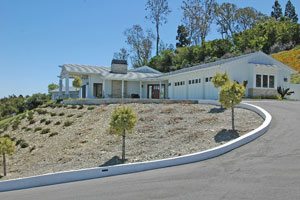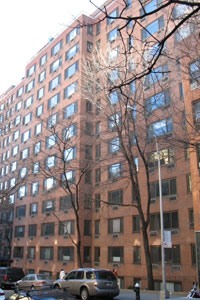In these neighborhoods $4 million homes are the norm.
Los Angeles has always been home to some of the world's most expensive real estate. But forgetBeverly Hills, 90210: The new hot spot for multimillion-dollar mansions is Duarte, 91008.
 |
| Bradbury, Calif. (91008) |
Duarte, Calif., home to the 91008 ZIP code, is a small suburb northeast of downtown LA, near the Los Angeles national forest. The median cost of a house in this tony town is a whopping $4,276,462, making it the most expensive housing market in the country. It ranks No. 1 on Forbes' annual ranking of America's Most Expensive ZIP Codes.
A scant 1,391 people live in 91008 ZIP code, and only 12 homes are currently on the market. So a single high-priced listing (like the mammoth nine-bedroom, built this year, that's selling for $19.8 million) is enough to skew the median price skyward.

The ascent of Duarte--for which the 91008 ZIP was created since 2000, to accommodate a growing population--shows that wealth is still drawn to big cities, even if their postbubble housing prices have dropped.
 |
| Beverly Hills, Calif. (90210) |
"In the big California markets there is essentially a chronic shortage of homes," says Mike Simonsen, CEO of Altos Research, a Mountain View, Calif., firm that tracks housing market data. "For the number of people that might want homes, there's always an order of magnitude fewer homes available than there are in Midwest, for example." More than half the locations in our ranking of America's 500 most expensive ZIP codes are in California.
High-End Slump Slows
 |
| Alpine, New Jersey (07620) |
The median price of America's high-end homes continues to slide, but not as fast as it did last year. Our index of 500 high-end ZIP codes saw the average home price fall 5%, to $1.2 million, from the same time last year. In 2009 the markets on our list saw a 7% price drop.
About 35% of the ZIP codes in our index saw median prices increase or stay flat, but that's likely because more high-priced homes are coming on the market, while more affordable housing continues to falter.
"The year-over-year price changes we're seeing here aren't necessarily the change in price for your house, if you have a house in this area," says Simonsen. "It's a change in the mix of homes on the active market."
Behind The Numbers
 |
| Atherton, Calif. (94027) |
Real estate trends are highly localized. Most cities are a collection of dozens of mini housing markets, so we bore down to the granular level to find out what neighborhoods are really on the rise.
Altos Research collects data on more than 20,000 ZIP codes; we asked it to rank them all to find the 500 most expensive in the country. Altos ranked each ZIP on the median asking price for single-family homes and condominiums, weighting the price based on the mix of homes in the market.
Priciest ZIPs In Devastated Markets
 |
| New York, New York (10014) |
On the ZIP code level some housing markets contrast dramatically with their surroundings.Miami, for example, where housing prices have plummeted and foreclosures continue to mount, still contains some of the most expensive homes in the country, with four ZIPs on the list, including 33109, in the No. 37 spot. This ZIP code, for celebrity enclave Fisher Island, boasts a median home sale price of $2,295,291.
 |
| Montecito, Calif. (93108) |
In Nevada, a state with 14% unemployment and the highest level of foreclosures in the country, there's still one ZIP on the list: Lake Tahoe's 89451, which takes the No. 389 spot.
Our index points to a slowing slide in the high-end market, but if a wave of foreclosures hits homes at the luxury level, as some experts predict it will, that slide could accelerate.
"We have yet to see mortgage defaults climb aggressively into higher-priced homes, but there are some signs that those could hit in next twelve months," says Simonsen. "If those mortgage resets drive inventory at the higher end, that would cause major problems."
America’s Top 10 Most Expensive ZIP Codes
No. 1: 91008
Duarte/Bradbury, Calif.
Median Home Price: $4,276,462
This newly-built nine-bedroom, nine-bathroom, 10,486-square-foot mansion with two swimming pools, a spa, gym, screening room, library and wine cellar, is on the market for $4,680,000. It’s just across the city limits from Duarte, but still in the 91008 ZIP. Sheng Development has the listing.
No. 2: 94027
Atherton, Calif.
Median Home Price: $4,010,200
This remodeled mid-century four-bedroom, four-bathroom, 4,010-square-foot ranch with a cathedral ceiling, fireplace, media room, 2-car garage and gardens sells for $4,488,000. It is listedwith Alain Pinel.
 |
| Rolling Hills, Calif. (90274) |
No. 3: 90274
Rolling Hills, Calif.
Median Home Price: $3,892,456
This sprawling five-bedroom, four-bathroom, 4,320-square-foot compound atop a hill with two fireplaces and a panoramic view of the Pacific Ocean is selling for $3,999,000. Shorewood Realtors has the listing.
No. 4: 07620
Alpine, N.J.
Median Home Price: $3,814,885
This seven-bedroom, five-bathroom colonial-style home with a double-height foyer, expansive lawn and three-car garage is on the market for $3,950,000. It is listed with Plawker Real Estate.
No. 5: 10014
New York, N.Y.
Median Home Price: $3,785,445
This one-bedroom, two-bathroom, 1,500-square-foot loft in a full-service building with views of the city is on the market in Manhattan’s West Village for $2,049,000. Clickit Realty has the listing.
 |
| New York, New York (10065) |
No. 6: 90210
Beverly Hills, Calif.
Median Home Price: $3,684,150
This five-bedroom, four-bathroom 4,700-square-foot Mediterranean-style home features a pool, large deck and views of the surrounding mountains costs $3,695,000. It is listed with Coldwell Banker Residential Brokerage Beverly Hills.
No. 7: 10065
New York, N.Y.
Median HomePrice: $3,626,001
This two-bedroom, two-bathroom condominium on Manhattan’s Upper East Side, occupying a full floor and featuring access to a private garden, gym and garage is selling for $975,000. Fenwick Keats Goodstein has the listing.
 |
| Tiburon, Calif. (94920) |
No. 8: 94920
Belvedere/Tiburon, Calif.
Median Home Price: $3,283,269
This three-bedroom, 4-bathroom 4347-square-foot Spanish-style stucco home in the section of 94920 that’s in neighboring Tiburon offers views and a fireplace and sells for $3,195,000. William J. Smith has the listing.
No. 9: 10012
New York, N.Y.
Median Home Price: $3,221,371
This downtown three-bedroom, two-bathroom with two terraces and a washer/dryer goes for $1,500,000. It is listed with Eychner Associates.
No. 10: 93108
Santa Barbara/Montecito, Calif.
Median Home Price: $3,151,220
This four-bedroom, four-bathroom stucco home in Montecito with cathedral ceilings, two fireplaces and a pool is on sale at $3,250,000. It is listed with Prudential California Realty.
Click here to see the full list of America’s Most Expensive ZIP Codes





![[banks_c]](http://barrons.wsj.net/public/resources/images/BA-AT888_banks__NS_20100924205719.gif)








